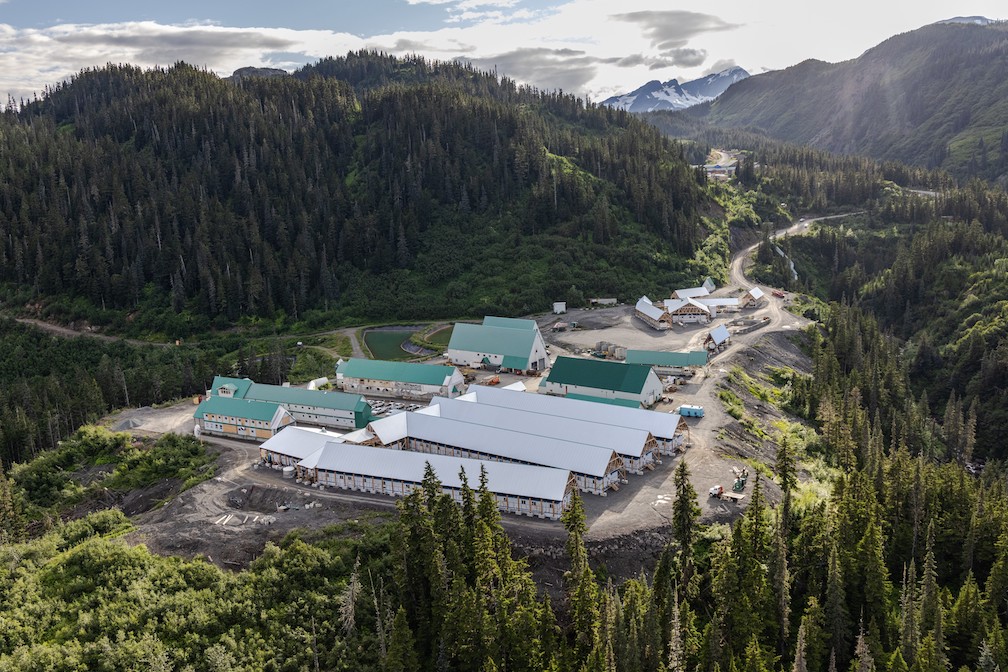Skeena feasibility forecasts robust returns for Eskay Creek gold-silver development


The release of a feasibility study today brings Skeena Resources (TSX: SKE, NYSE: SKE) is one step closer to resuming production at its high-grade Eskay Creek gold-silver project in British Columbia’s Golden Triangle.
The feasibility study forecasts an after-tax net present value of $1.4 billion at a base case of US$1,700 per oz. of gold and US$19 per oz. of silver using a discount rate of 5%. It projects an after-tax internal rate of return of 50.2% and after-tax payback of pre-production capital costs in one year.
Through years one to five, the study estimates average annual production of 431,000 gold equivalent ounces and total production of 3.2 million gold equivalent ounces over a nine-year mine life. Estimated pre-production capital costs total $592 million. Life-of-mine all-in sustaining costs are pegged at US$652 per oz. of gold equivalent recovered in concentrate.
“Eskay Creek is truly a unique deposit that provides excellent profit margins due to its existing infrastructure and high open-pit grade,” said Skeena CEO Walter Coles in a release. “Even at US$1,400 gold and US$13 silver prices, the project still generates an average annual after-tax cash flow of $209 million with an after-tax IRR of 36% and a 1.5-year payback of initial capital.”
Skeena president Randy Reichert added that the feasibility study confirmed the robust economics originally shown in the prefeasibility study in July 2021 but with “improved definition.”
“The open pit mineable, high-grade ore combined with the existing infrastructure at the Eskay Creek site and nearby hydro power provides for an extraordinary project,” he said.
The company will continue to work on optimization of the project as well as permitting.
Eskay Creek operated from 1994 to 2008 as an underground operation producing 3.3 million ounces of gold at an average grade of 45 grams/tonne and 160 million ounces of silver at average grade of 2,224 g/t, qualifying it as one of the highest-grade gold mines in the world. Skeena optioned the property in 2017.
Current proven and probable open-pit reserves total 29.9 million tonnes grading 2.99 grams gold and 79 grams silver per tonne (or 4 grams gold equivalent per tonne) containing 2.9 million oz. Of gold and 75.5 million oz. of silver (3.9 million gold-equivalent ounces).
In a note to clients, mining analyst Craig Stanley of Raymond James wrote that “the results continue to confirm our belief that Eskay Creek is the premier, undeveloped open pit precious metals project in Canada.”
Stanley noted that Skeena has guided environmental assessment approval in the fourth quarter of 2024, with first production in the fourth quarter of 2025. “Management is looking to permit a bulk sample and associated infrastructure (e.g., upgrading roads, substation, pre-stripping) for 2023-2024 that would allow the company to spend two thirds of pre-production capex before final permits,” he added.
The company is still evaluating the potential for an underground mining component to the project but at this point the focus is on an open-pit operation using conventional mining equipment.
The proposed open-pit operation is projected to be one of the lowest greenhouse gas emitting open-pit gold mines in the world owing to the availability of clean, green hydro power from a hydro-electric power station 7 km from the mine site. Management is also planning to use battery-powered or hydrogen powered mobile equipment, including shovels, drills, excavators, personal carriers and snow removal equipment.
Eskay Creek lies within the unceded territory of the Tahltan Nation, a mining-friendly First Nation whose Tahltan Central Government is a Skeena shareholder, having invested $5 million in the company. The Tahltan Nation has a longstanding relationship covering training, employment and contracting opportunities dating back to the previous operators of the mine.
Comments